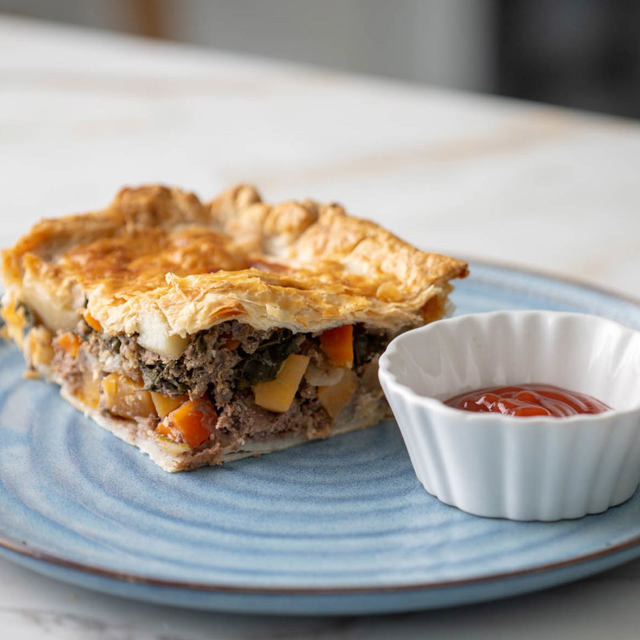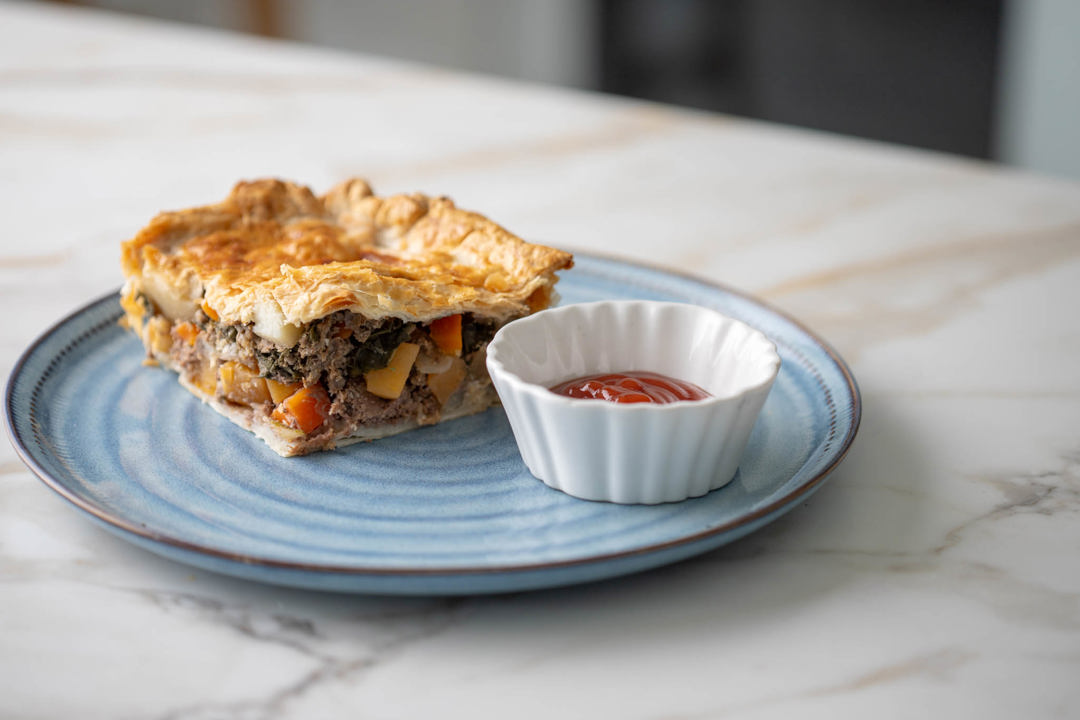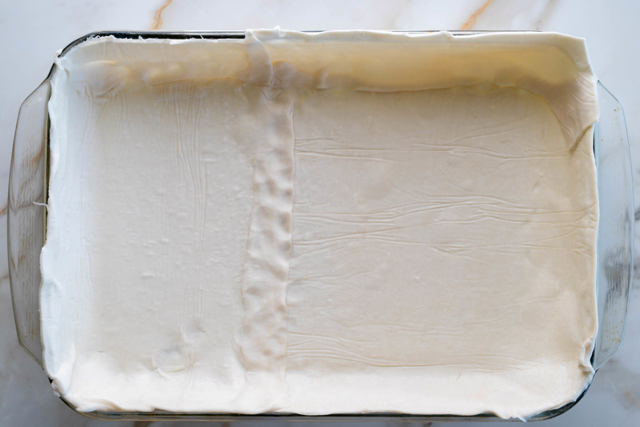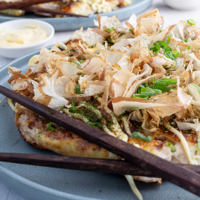Pies are one of the ultimate comfort foods, and for me my grandmother’s pasty is also super nostalgic. I remember she’d often make this for us when I was a kid - it’s the only thing I remember her cooking - she’d send it home and mum would reheat it and serve it alongside the same vegetables that were in it 🤣
I don’t know where she originally got the recipe; there’s quite a bit more veg than what’s in a traditional Cornish pasty, and she always made it as a large pie, rather than as a crimped pasty shell as is traditional.
What is a pasty?
A traditional Cornish pasty is a savory pastry that originated in Cornwall, a region in the southwest of England. Cornwall, with its rich mining history and picturesque landscapes, provided the perfect backdrop for the creation of this iconic British dish. Legend has it that the pasty was invented for Cornish miners, as its unique design allows it to be a self-contained, hand-held meal. Typically, fillings are steak, potato, swede, onion and salt and pepper.
Now Aud’s pasty… she made this in a pie dish. It’s definitely not handheld. She also added tomato sauce and Worcestershire sauce, along with carrot and silverbeet. But this combination works, and anything that has a lot of vegetables in it that my kids eat I consider a win.
Aud's pasty Ingredients
- Beef mince - ideally around 10% fat. You can get away with leaner mince, but avoid using fattier mince because it makes the pasty too rich.
- Root vegetables – Aud used potato, carrot, onion and swede (rutabaga). These were cut into large dice, around 1.5-2cm (approx. ¾").
- Silverbeet aka Swiss chard – bottoms of the stalks are removed and then sliced.
- Seasoning – tomato sauce, Worcestershire sauce, salt and pepper
- Pastry – up to you whether you want to use shortcrust, puff or rough puff. I’ve written the recipe for puff because that’s what grandma always used.
How to make Aud's pasty
Preheat your oven to 180C. Line the base of your pie dish with pastry (1) and then prick it with a fork (2). Cover with aluminium foil (3); if you’re using shortcrust, you will need to add pie weights on top of the foil. Bake the pastry for 20 minutes - while the pastry is baking, you can continue with the recipe.
While the pastry is baking, start preparing the root vegetables. You want to use a large dice, around 1.5 – 2cm (around ¾”). For the onion, halve it, remove the skin and then cut lengthways about 1.5cm apart. Then rotate it and cut across every 1.5cm.
Next up, prepare the silverbeet. Remove the stems at the point the leaves finish, and then stack all the leaves, make 3 or 4 cuts down the length of the leaves, and then slice across them every 1cm.
Get out a large mixing bowl, and add the mince, root vegetables, silverbeet and seasonings. Stir everything thoroughly so that the mince wraps around the vegetables.
After mixing, if you want to check the seasoning you can cook a tablespoon of the filling in a small skillet or microwave until cooked through.
By this stage, the pastry should be ready. Remove it from the oven after 20 minutes of baking, remove the foil (1) and then add the filling on top of the pastry (2). Push it down a little so that any gaps in the filling gets closed and the filling gets pressed into the corner of the pastry.
Cover the top of the filling with pastry, pressing it into the edge of the pastry which has been blind baked (1). Use a sharp knife to make a few slits in the top of the pastry so that warm air can escape (2).
Make an egg wash by cracking an egg into a bowl and beating with a fork. Use a pastry brush to brush the egg over the pastry.
Bake in the oven at 180C for an hour, until golden and cooked through.
What to do with leftover pasty?
Unsurprisingly, given the history of pasties, the leftovers are very good cold. It also freezes well – wrap it in plastic and then in foil, where it should remain good in the freezer for 3 months.
You can also reheat it in the oven - bake at 160C until warmed through, which should take 25-30 minutes.
What to serve with a pasty?
A pasty is a satisfying and complete meal on its own, but for a more substantial meal you can serve it with some vegetables or a salad to the side.
Some ideas:
- Steamed vegetables; avoid things which are already in the pastie, so consider broccoli, cauliflower, beans, and peas.
- A salad
You can also use condiments to enhance the flavour of the pasty, I’d recommend tomato sauce, pickles or a chutney.

Aud's Pasty
| Prep | Cook | Total |
|---|---|---|
| 15 mins | 80 mins | 95 mins |
- 4 puff pastry sheets this is approximate, depending on the size of your dish, you might need more or less, see note 1
- 300g potato, peeled, cut into large dice approx. 2 medium or 1 large, see note 2
- 300g swede, peeled, cut into large dice approx. 2 swedes, see note 2
- 300g carrots, cut into large dice approx. 3-4 carrots, see note 2
- 300g onion, cut into large dice approx. 2 medium onions)
- 200g silverbeet leaves, cut into strips aka swiss chard, see note 3
- 1kg lean beef mince no more than 10% fat, see note 4
- 1/2 cup tomato sauce
- 1/2 cup Worcestershire sauce
- 1 tsp salt
- 1 tbsp cracked black pepper
- 1 egg, optional see note 5
- Preheat your oven to 180C.
- Prepare pastry - Get a large pie dish out and line the sides and base with pastry. Use a fork to pierce the pastry and then cover with aluminium foil and bake in the oven for 20 minutes.
- Prepare vegetables - While the pastry is cooking, prepare the vegetables according to instructions.
- Mix filling - Place the potato, swede, carrots, onion, silverbeet, mince, tomato sauce, Worcestershire sauce, salt and pepper into a large mixing bowl. Thoroughly mix so that the vegetables are incorporated into the mince and the seasonings are mixed throughout.
- Place filling in pie shell – By now the pastry should be cooked, after 20 minutes in the oven remove from the oven and remove the aluminium foil. Place the mixed filling into the pie shell and gently press the mixture down to remove air bubbles and push the filling into the corners of the dish.
- Pie lid – place pastry as required on top of the pie filling and press into the sides of the cooked pastry. Make a few slashes with a sharp knife on top of the pastry so that steam can escape.
- Egg wash – Optional step, but doing this will give you a better finish on your pastry. Crack the egg into a bowl and whisk with a fork to combine the yolk with the white. Use a pastry brush and brush the top of the pastry.
- Bake for 1 hour at 180C, or until the pastry is golden and the filling is cooked through. If you’re using a thermometer, the filling should be around 95C which will indicate that the vegetables are cooked through and won’t be firm.
- Pastry - I’ve written the recipe for puff pastry, but you can use shortcrust if you prefer. When blind baking shortcrust, you’ll need to use pie weights to prevent the pastry from pulling away from the side of the pie dish. The number of pastry sheets is approximate and will depend on the size of your baking dish.
- Root vegetable size - cut the potato, swede and carrots into large dice, roughly 1.5-2cm in size or about 3/4" inch. The number of vegetables needed is approximate, please go by weight for the recipe to ensure the correct proportion of vegetables to meat.
- Cutting silverbeet - cut the silverbeet stems off where the leaves end. Weigh the leaves and then cut lengthways 3-4 times, then rotate 90 degrees and cut every 1cm. You should end up with strips of silverbeet leaves which are around 3-4 cm long and 1cm thick.
- Beef fat - avoid beef mince with fat content greater than 10%. The excess fat will make the pastry soggy and the dish will be too greasy. 10% fat is ideal, however, feel free to use leaner mince if you wish.
- Egg wash - the egg wash is optional, but it will improve the texture and colour of the pastry as it bakes.
- Testing seasoning - if you want to check the seasoning of your mixture you can cook a tablespoon of the filling in a small skillet or microwave until cooked through.






























